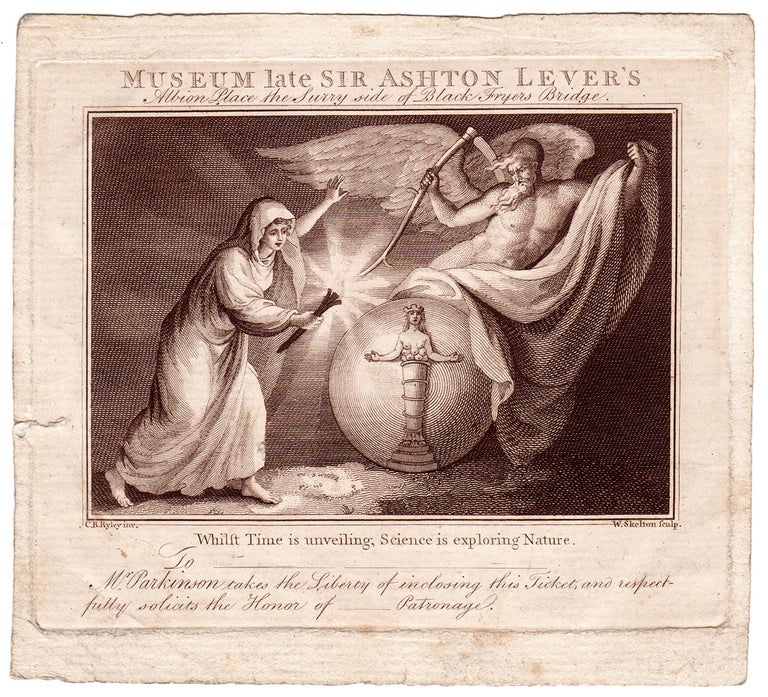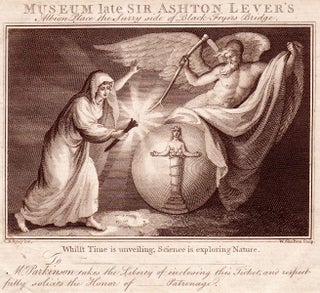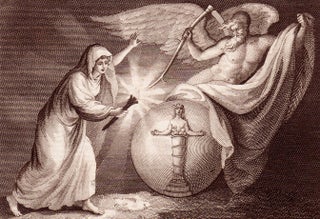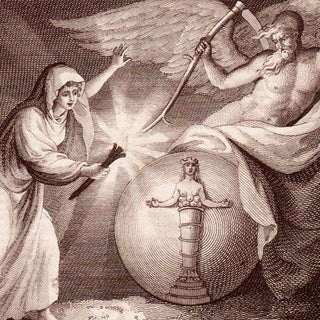Museum late Sir Ashton Lever’s Albion Place the Surry side of Black Fryers Bridge.
[London], 1788–1806. Engraving, image size, 118 x 11.5 cm. Sheet size, 13 x 14.5 cm. A rare, beautifully engraved ticket for the late Sir Ashton Lever’s natural history museum, featuring a striking allegorical illustration depicting Time, Nature, and Science. Lever (1729–1788) was an English collector of natural objects whose collection contained some 28,000 specimens. He began collecting seashells around 1760 and slowly amassed one of the most remarkable private collections of natural objects, including live animals. In 1772 he opened his “Holophusicon”—roughly meaning ‘embracing all of nature’—to the public at Alkrington Hall, on his property near Manchester, relocating to Leicester Square in London in 1774. Captain James Cook found Lever’s collection impressive and began donating objects gathered on his voyages. Lever continued acquiring items until he went bankrupt. Failing in his attempts to sell the collection to the British Museum and the Empress of Russia, he was forced to dispose of it via lottery in 1786. 8,000 tickets were sold at a guinea each and its winner, James Parkinson (1730–1813) spent nearly two decades trying to make a success of its display at the Blackfriars Rotunda in London. This ticket for Parkinson’s “Museum late Sir Ashton Lever’s” at “Albion Place the Surry side of Black Fryers Bridge” features an engraving entitled, “Whilst Time is unveiling, Science is exploring Nature.” This allegory depicts Nature as a globe featuring a crowned and supra-buxom woman—endowed with nine breasts—standing upon a pedestal, gazing upwards with arms wide open. A wingéd male figure with sickle in hand—personifying Time—is shown pulling a cloth off Nature, while a hooded woman—Science herself—leans forward with a torch, illuminating Nature. When Parkinson sold Lever’s collection in 1806 it was auctioned off in parts. Among the biggest buyers to come forward were the British naturalist Edward Donovan and Leopold von Fichtel, who bid for Vienna’s Natural History Museum, as well as the Earl of Derby and William Bullock. Rare. No copies recorded in OCLC. A google search locates a copy at the London Metropolitan Archives. A beguiling piece of Leverian ephemera. REFERENCES: McNearney, Allison. How Sir Ashton Lever Curated The World—Then Lost It All at dailybeast.com; Sir Ashton Lever of Alkrington at manchester2002-uk.com CONDITION: One short tear at margin and light rubbing at margins.
Item #5296
Sold





